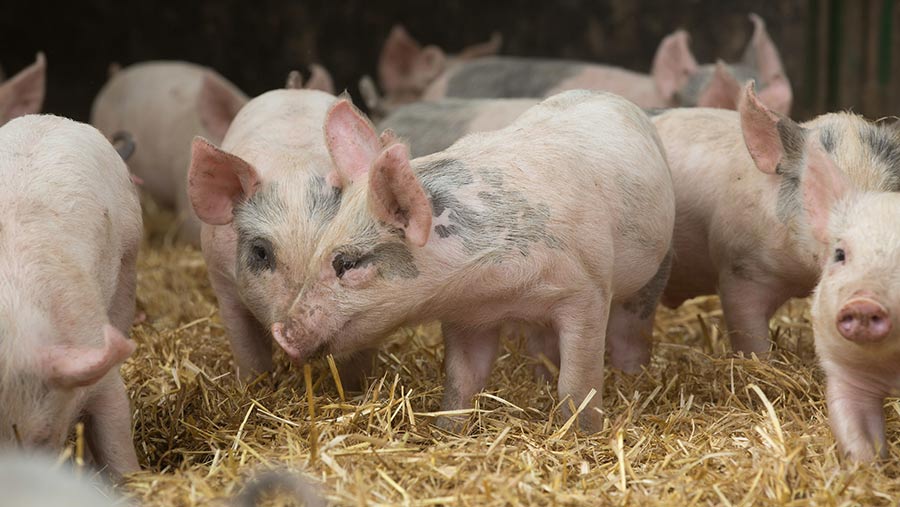4 early signs of tail biting to watch for on pig farms
 © Tim Scrivener
© Tim Scrivener Once a tail-biting outbreak happens, it can be hard to control. Identifying the early signs of tail biting and knowing how to act upon them can help prevent it.
Keeping a close eye and good recording is key. It’s important to record any changes made to the environment, any observations in daily checks and any changes made if there are signs of tail biting.
These tips, put together by AHDB Pork, cover what to look out for on a daily basis and action measures if you detect signs.
Watch out for: pigs chewing on other pigs
Check daily for:
- chewing other pigs
- chewed ears
- mouthing other pigs but not necessarily injuring them
- biting or fighting with other pigs
Actions to take:
- Add additional enrichment to environment
- Spray mark the pig doing it to monitor their behaviour
See also: What tougher tail docking inspections mean for farmers
Watch out for: agitated or restless pigs
Check daily for:
- restless or agitated pigs
- noisy pen
- individual avoided by others/individual active when others are resting (could be a tail biter)
- sick pigs, which are often targeted for biting
Actions to take:
- Identify restless pigs to watch by spray marking
- Check for causes. For example, stop draughts, identify health issues or adjust feeders and drinkers
Watch out for: tails
Check daily for:
- tails tucked under
- tails hanging down or limp
- bruising
- tails being guarded when at feeders
- lesions
Actions to take:
If tails are being guarded, check whether feeders and drinkers are:
- working correctly
- adequately spaces and have appropriate flow rates
- need to be repositioned or increased in number
Watch out for: lesions
Check daily for:
- many marked pigs in a pen
- scratches/scrapes
- signs of fighting
- crusty ear tips
Actions to take:
- Add additional enrichment
- Remove and treat pigs with lesions
You can find more about the early warning signs of tail biting and tips to manage the risk on the AHDB Tail Biting WebHAT.
You can also request a free A3 poster of these tips to display on the farm for all staff to see by emailing comms@ahdb.org.uk

